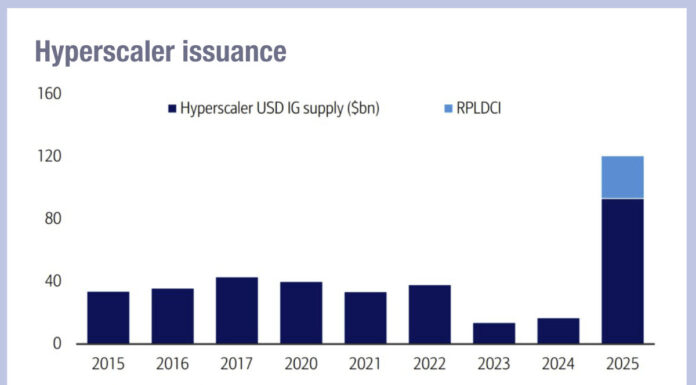Driven by volume growth and technology

By Bo-yun Liu, Director of Product Solutions, TransFICC
Taken in aggregate, the Muni market is roughly $4.2T Outstanding with $15.6B ADV (+20% YoY), compared to the US Credit market’s $11.4T Outstanding and $60.4B ADV (+14.6% YoY). The Desk spoke with Bo-Yun Liu, Director of Product Solutions at TransFICC in New York, about the growth drivers in the Muni market and its gradual evolution towards a more electronic trading structure.
How is the Muni market evolving?
In the last few years, Muni electronic trading has shown a considerable upswing. According to Coalition Greenwich, the electronic share of Muni trading has steadily risen from 6% in 2015 to just over 18%, though anecdotally the share could be higher, once direct bilateral trading is accounted for.
The Muni market is highly fragmented – in issuance, holdings and trading venues. The market is made up of one million plus non-fungible securities. US Credit, by comparison, is three-times the notional size but concentrated in far fewer issues. Furthermore, due to state-specific tax treatments, Muni holdings are spread across many buy-and-hold accounts. further increasing holding fragmentation and reducing each issue’s propensity to trade.
In terms of Electronic Trading, ICE TMC, Tradeweb Direct, and BondPoint have held the majority market share. Institutional platforms like MarketAxess and Bloomberg also own a meaningful slice. More recently, entrants such as OpenYield have found good traction. In addition, portfolio systems and aggregators such as Aladdin, Investortools, Parametric, Adroit, and TrueMarket have all emerged as important platforms. Together, no less than ten platforms make up the Muni electronic market. This adds another layer of fragmentation and creates challenges for firms navigating the evolving Muni market structure.
What is driving this and why now?
Since the mid-2010s, Separately Managed Accounts (SMAs) saw considerable inflow from traditional vehicles like Mutual Funds, driven by demand for customized portfolios, tax advantages, and transparency. Advancements in buy-side technology, including algorithms and AI, has enabled money managers to efficiently create and manage a large number of customized SMA portfolios.
The rise of SMAs created a condition for more, albeit smaller individual transactions and has been credited with the growth in retail participation in electronic trading in Munis. Take Tax Loss Harvesting, for example, two SMAs holding two securities of similar characteristics can sell one and buy the other to lock in a paper loss — all the while maintaining the original exposure. The rise of SMAs greatly improves the odds of locating a counterparty with fitting objectives to trade with.
According to Municipal Securities Rulemaking Board (MSRB) data, the Muni market has seen a drop in average trade size, from around $350k in mid-2010s to $220k today while total trading volume went up 50%. This development coincided with an increase in algo liquidity providers in the Muni market, likely attributable to the increase in data availability for programmatic price formation.
An increase in dealer competition also led to compression of Bid-Offer spread over the same time period. A 2018 MSRB study estimated the average effective spread, in price terms, for dealer-to-customer trades to be 73 bps, which declined to 50 bps towards the end of 2024. Among other interpretations, Bid-Offer spread is an expression of market makers’ balance sheet cost and its tightening is proof that inventory turnover is improving.
The rise of SMAs, driven by buy-side technology and client demand, led to increased retail participation and trade frequency, which in time created the necessary conditions for algos, which in turn drove down Bid-Offer spread and transaction cost. This made SMAs even more appealing a vehicle – completing a virtuous cycle for the overall shift towards electronification of the Muni market.
What does the future look like?
Given increasing platform fragmentation, infrastructure specialists are in an ideal position to offer protocol normalization, speed to market, operating leverage and other technology efficiencies to an ever increasing number of firms looking to capture the upside of Muni electronification. As electronic volumes continue to increase, participants are looking to access more venues, while also automating large parts of the multiple different trading workflows, as they look to reduce costs.
As this market evolves, Direct Connectivity is likely to be a key theme, as participants seek to deploy technology solutions to efficiently navigate the fragmented market and reduce transaction costs. Much in the way of Rates and Credit, this will be an interesting proposition, with the right infrastructure. Although this is still at an early stage in the Muni market, we are aware of initiatives that are looking to reduce the friction of Buy-side and Sell-side trading directly.
In addition, pricing specialist firms like Spline Data, started by Headlands veteran Matthew Smith, have further lowered the bar of entry to Muni algo trading. The AI/ML start-up provides both real-time predictive Muni price streams and the quant framework where clients can incorporate their own inputs to ramp up algo capabilities. Others in this space include PricingDirect (JP Morgan), Solve and Deep MM – and we may see evaluated pricing providers like ICE and BVAL to make a play in the future. Ultimately the winners in this space will be those who can provide true market expertise and guidance for clients to extract practical value out of vendor quantitative models.
Last but not least, as volume continues to increase, clearing and settlement will be another place where participants look to find more efficiency. While Muni trades already clear and settle through DTCC, trade netting is by and large inaccessible and ticket cost remains high. This helps to explain why smaller trades see a wider Bid-Offer spread than institutional sizes – much more so in Munis compared to Corporates. With the fragmented nature of the Muni market, it’s unclear whether FICC netting will ever effectively bring ticket cost down – short of a major consolidation. Perhaps technology innovation in settlement infrastructure will help reduce this area of friction.
©Markets Media Europe 2025











